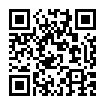Управление сознанием со стороны экстремистских организаций средствами интернет-коммуникации
Научная статья
Аннотация
Литература
Константинов М. С. Когнитивно-идеологические матрицы // Политика развития, государство и мировой порядок : материалы VIII Всерос. конгресса политологов. Москва, 6–8 декабря 2018 г. / под общ. ред. О. В. Гаман-Голутвиной, Л. В. Сморгунова, Л. Н. Тимофеевой. М.: Аспект-Пресс, 2018.
Лукичев П. Н. Идеологемы правого радикализма в общественном сознании студентов вузов Ростовской области // Гуманитарий Юга России. 2016. № 6. С. 80–91.
Лукичев П. Н. Пограничные идеологемы правого радикализма в студенческой среде Ростовской области (по материалам социологического исследования) // Обзор. НЦПТИ. 2018. № 1 (12). С. 3449.
Сейджмен М. Сетевые структуры терроризма. М.: Идея-Пресс, 2008.
Юрчак А. В. Понятие и сущность экстремизма // Вопросы науки и образования. 2018. № 17 (29). С. 56–57.
Conway M. Determining the role of the internet in violent extremism and terrorism: six suggestions for progressing research // Studies in Conflict & Terrorism. 2017. № 1 (40). P. 77–98.
Conway M. Terrorists’ use of the Internet // Information & Security. 2006. Vol. 19. P. 9–30.
Chris Hale W. Extremism on the world wide web: A research review // Criminal Justice Studies. 2012. № 25. P. 343–356.
Della Porta D. Political Socialization in left-wing underground organizations: biographies of Italian and German militants // International Social Movement Research. 1992. № 4. P. 259–290.
Della Porta D. Recruitment process in clandestine political organizations: Italian left-wing terrorism // International Social Movement Research. 1998. № 1. P. 155–169.
Hoffman B. The myth of grass-roots terrorism. Why Osama bin Laden still matters // Foreign Affairs. 2008. № 87. P. 133–138.
Iannakkone L. R., Berman E. Religion, economics // The New Palgrave Dictionary of Economics. Second Edition. S. N. Durlauf, L. E. Blume (Eds.). 2008. Vol. 7.
Lipset S. M. Political Man. Garden City. N.Y.: Doubleday, 1960.
Lukichev P. N. Boundary ideologemes of the right-wing radicalism in the student's environment of higher education institutions in the South of Russia (on the example of the Rostov region) // Scientific Almanac of the Black Sea countries. 2018. Vol. 16, № 4. P. 20–31.

Поступила: 26.11.2021
Опубликована: 26.05.2022





